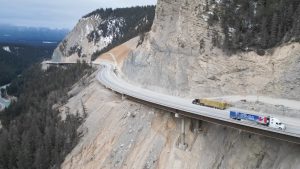TOKYO — A government-commissioned group of experts concluded March 7 that a costly underground ice wall is only partially effective in reducing the ever-growing amount of contaminated water at Japan’s destroyed Fukushima nuclear plant, and that other measures are needed as well.
The plant’s operator, Tokyo Electric Power Co., says the ice wall has helped reduce the radioactive water by half. The plant also pumps out several times as much groundwater before it reaches the tsunami-damaged reactors via a conventional drainage system using dozens of wells dug around the area.
The groundwater mixes with radioactive water leaking from the damaged reactors.
The panel agreed the ice wall helps, but said it doesn’t completely solve the problem. Panel members suggested additional measures be taken to minimize the inflow of rainwater and groundwater, such as repairing roofs and other damaged parts of the buildings.
The 1.5-kilometre coolant-filled underground structure was installed around the wrecked reactor buildings to create a frozen soil barrier and keep groundwater from flowing into the heavily radioactive area. The ice wall has been activated in phases since 2016. Frozen barriers around the reactor buildings are now deemed complete.
On March 7, TEPCO said the amount of contaminated water that collects inside the reactor buildings was reduced to 95 metric tonnes per day with the ice wall, compared to nearly 200 tonnes without one. That is part of the 500 tonnes of contaminated water created every day at the plant, and the other 300 tonnes were pumped out via wells, treated and stored in tanks.
In addition to the 35 billion yen ($320 million) construction cost funded by taxpayers’ money, the ice wall needs more than 1 billion yen ($9.5 million) annually in operating and maintenance costs. Critics have been skeptical about the ice wall and suggested that the greater use of wells — a standard groundwater drainage system — would be a cheaper and more proven option.
The plant has been struggling with the ever-growing water — only slightly contaminated after treatment — now totalling 1 million tonnes and stored in 1,000 tanks, which take up significant space at the complex, where a decades-long decommissioning effort continues. Officials say they aim to further reduce the amount of contaminated water in the reactor buildings before starting to remove melted fuel in 2021.











Recent Comments
comments for this post are closed